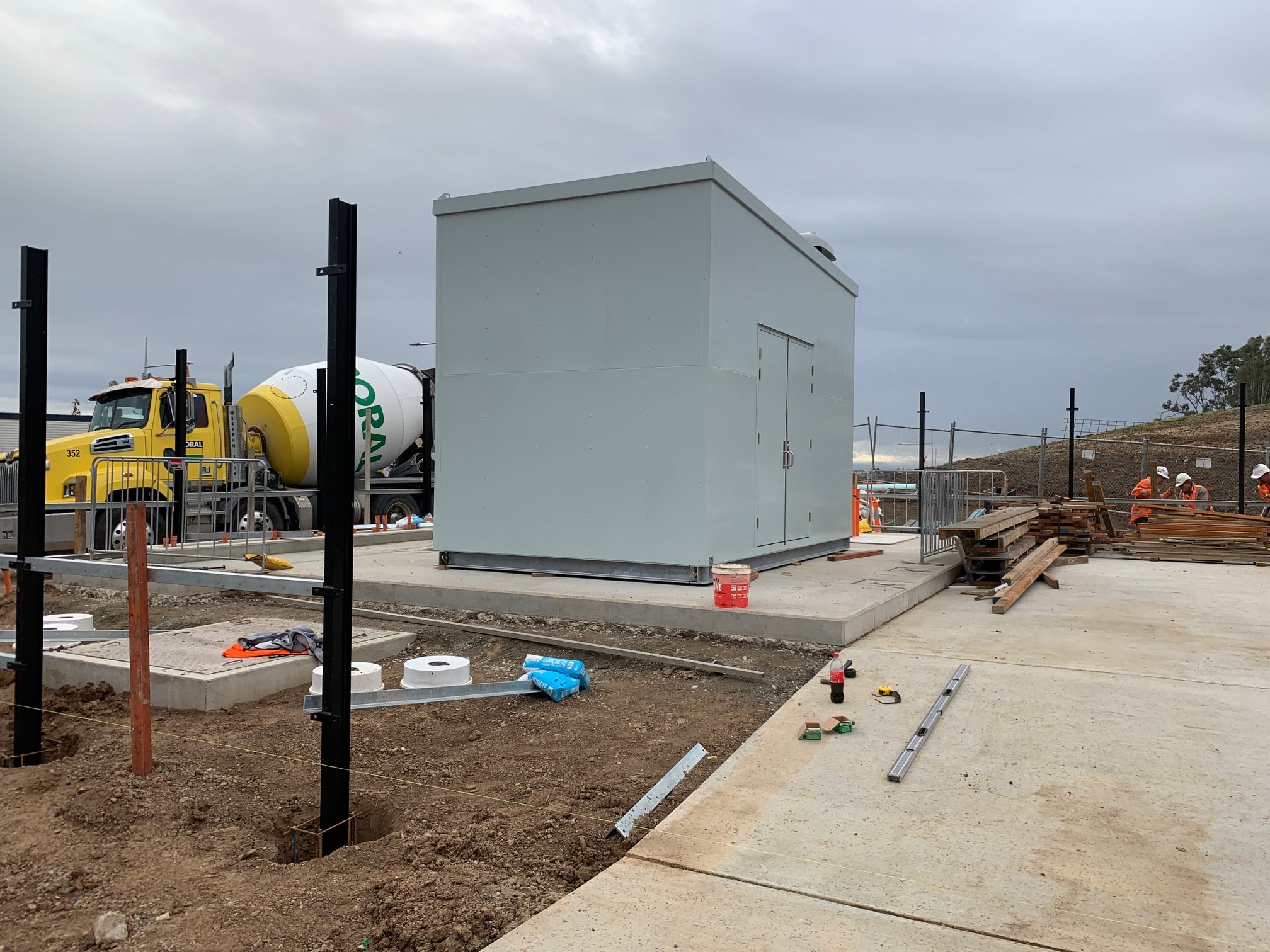Call 1300 799 969 | Contact Us


Home » Mitigation strategies for pump station noise in Australia
Operating at the heart of Australia’s humming utilities industry, pump stations are unsung heroes ensuring the smooth flow of water, wastewater, and fluids that are vital to the nation’s infrastructure. Yet there is no doubt that they are noisy.
An unintended consequence of pump station operation, noise disturbances challenge the quality of life for residents in neighbouring communities.
In this article, Flexshield’s experts examine the causes of pump station noise and provide a comprehensive guide on addressing and mitigating this issue. We also highlight pump stations’ critical role in Australia’s diverse industries.
The nation’s reliance on pump stations is deeply ingrained in sustaining Australia’s infrastructure and diverse industries. Pump stations are utilised for:
Water supply and distribution: To address challenges with water scarcity, pump stations transport water from reservoirs, rivers, and other sources for use in communities, agriculture and industries.
Wastewater management: Essential for collecting and transporting wastewater to treatment facilities, pump stations play a key role in maintaining sanitation and preventing environmental contamination.
Stormwater management: Pump stations manage stormwater in urban areas, preventing flooding during heavy rainfall and safeguarding communities from water-related risks.
Mining operations: In mining, pump stations are critical for dewatering mines, transporting slurry, and facilitating various fluid-based processes.
Irrigation systems: Pump stations support agriculture by transporting water from various sources to fields, ensuring a consistent water supply for crop growth.
Oil and gas industry: In the extraction and transport of oil and gas, pump stations assist in the movement of crude oil through pipelines.
Infrastructure development: Pump stations are vital in construction projects, aiding in dewatering construction sites, tunnelling, and managing groundwater levels.
Water recycling and reuse: Supporting sustainable water management, pump stations transport treated wastewater for non-potable purposes, contributing to water recycling efforts.
Desalination plants: Pump stations play a key role in desalination, converting seawater into freshwater to address water scarcity in certain regions.
Power generation: Pumped hydro storage, facilitated by pump stations, is used for energy storage and generation, contributing to the stability of the power grid.
Pumps generate excess noise due to various factors, including vibration, cavitation, impeller irregularities, flow-induced noise, mechanical wear, misalignment, and inherent design characteristics. Identifying the specific source of excess noise is crucial for successful noise reduction strategies. These may include:
1) Promoting vibration reduction through isolation
Installing anti-vibration mounts or pads isolates the pump, which reduces the transmission of vibrations. Flexible couplings between the pump and motor absorb vibrations, minimising their impact.
2) Installing soundproofing enclosures
Constructing enclosures around the pump using soundproofing materials proves effective. Ensure optimal heat dissipation for equipment by taking ventilation into account at the design stage.
3) Preventing cavitation
Operating pumps within their prescribed pressure limits helps prevent cavitation. Adjusting system parameters can also help to mitigate this common cause of pump noise.
4) Performing maintenance and balancing
Ensuring routine inspections and balancing of rotating components, along with timely replacement of worn parts, will work to diminish mechanical noise.
5) Installing silencers and noise reduction devices
Integrating silencers into the pump’s discharge or intake pipes effectively absorbs or dissipates the noise generated by fluid flow.
6) Ensuring proper installation and alignment
Accurate installation and alignment mitigates excessive vibrations and noise. For this reason, strict adherence to manufacturer guidelines is imperative.
7) Lubricating moving parts
Sufficient lubrication of moving parts reduces friction-induced noise, contributing to a quieter operation.
8) Installing sound barrier fencing
Outdoor pump stations benefit from sound barrier fences which are constructed using materials designed for effective sound insulation.
9) Encouraging community action
Collaboration between local authorities, utility companies, and community representatives to address noise concerns proactively is essential. Reporting community concerns to the local council, contacting the pump station utility company, and consulting with the Environmental Protection Authority (EPA) for noise regulations can yield positive outcomes.
Successfully mitigating pump station noise requires a holistic approach that combines technical solutions with community engagement and regulatory compliance.
By understanding the root causes of pump noise and implementing proactive measures, we can cultivate harmonious relationships between industrial facilities and the communities they serve, fostering a quieter and more amicable coexistence. Simultaneously, recognising the indispensable role of pump stations in Australia underscores their significance in sustaining the nation’s infrastructure and diverse industries.
For assistance identifying and quietening noise in your pump station, please call Flexshield on 1300 799 969.